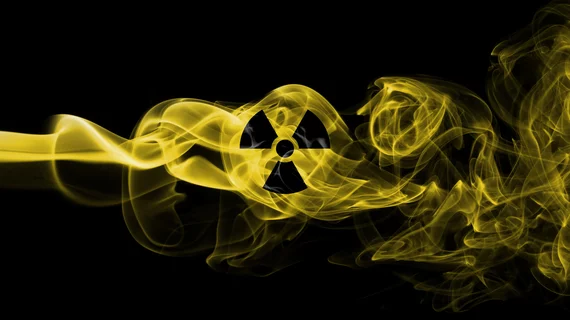U.S. radiologists helped produce a 20% drop in patients’ medical radiation dosage during the decade that ended in 2016, with a “substantial” dip in nuclear imaging scans fueling the trend.
In 2006 alone, clinicians delivered 17 million such procedures, and that number plummeted to 13.5 million by 2016, researchers reported Tuesday in Radiology. A cut in Medicare payment may have contributed, driving doctors away from heart imaging methods that rely on ionizing radiation.
“Nuclear medicine basically fell off a cliff, possibly due to cardiologists discovering that reimbursement was way down and that, for cardiac ischemia and other indications, stress echocardiography is essentially as accurate as the nuclear medicine procedures,” lead author Fred Mettler Jr., MD, a radiologist with the University of New Mexico, said in a statement.
The U.S. National Council on Radiation Protection and Measurements reached its conclusions through a retrospective analysis of imaging data from several sources. NCRP—of which Mettler is a member—released its initial findings back in November, while Tuesday’s analysis further distills the results.
All told, the team reported that annual individual dose from diagnostic and interventional imaging procedures fell from 2.9 millisieverts in 2006 to 2.3 by 2016, a 20% drop. The trend occurred at a time when the U.S. population increased, and the number of radiologic exams remained “largely unchanged.”
CT scans also trended upward during the decade, from 67 million up to 84 million by 2016. However, Mettler and colleagues noted a 6% dip in individual radiation dose. This was likely driven by dose-modulation techniques in scanners, along with newer CT machines’ increased efficiency, requiring less radiation.
Large scale campaigns to reduce unnecessary imaging, such as Choosing Wisely and Image Gently, likely played a role in the drop, too, authors noted. The drop in dosage followed a significant increase from 1980 to 2006 that likely “woke everybody up to the problem,” Mettler added.

